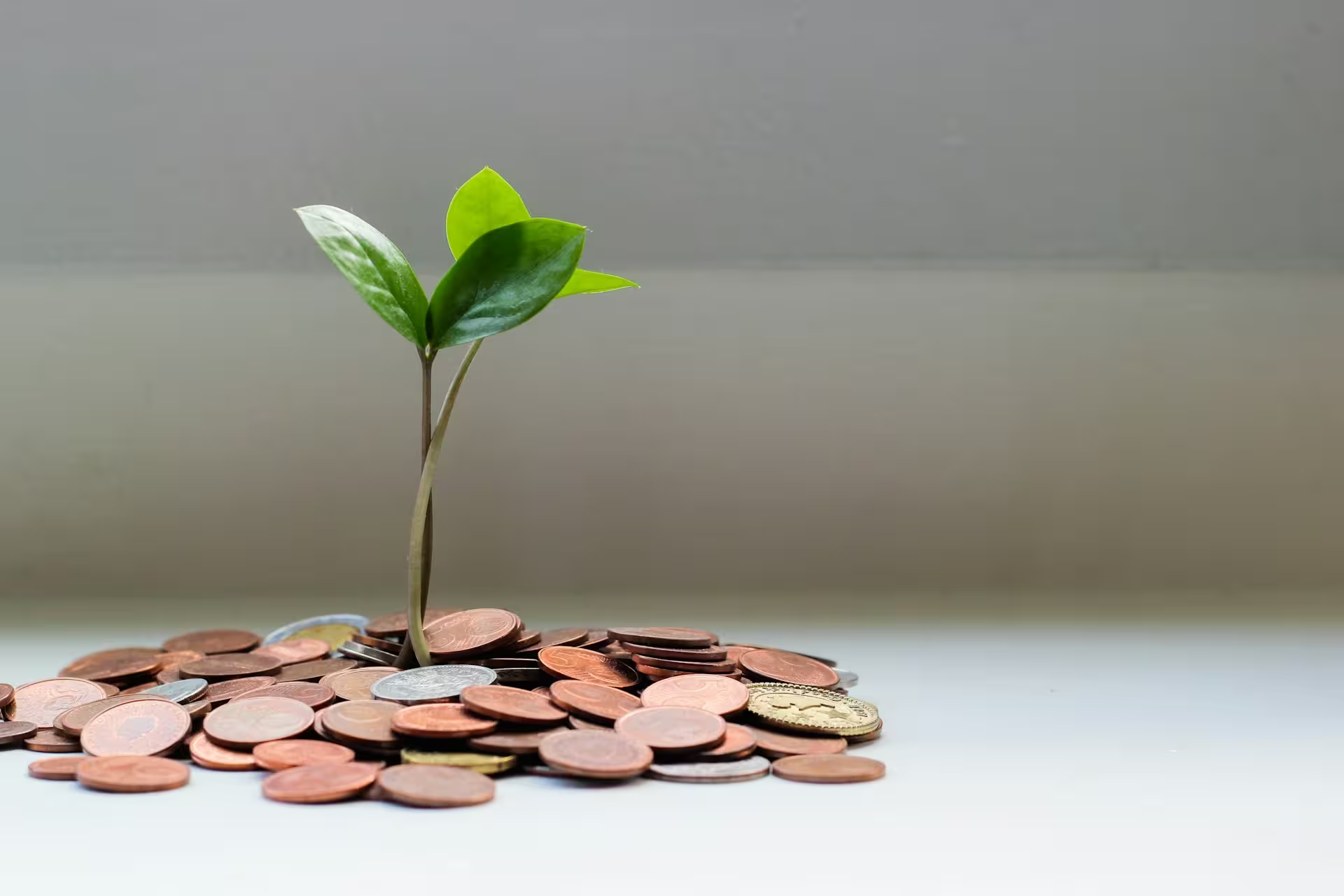Do you have €100,000 to invest? Congratulations! This sum represents an exceptional opportunity to implement a high-performing investment strategy tailored to your profile and objectives.
Faced with a multitude of available options, how do you make the right choices? Which investments should you prioritize in 2025? How do you take into account your requirements for security, return, and taxation?
This complete guide will accompany you step-by-step to help you transform this savings into an investment portfolio that works for you. The strategies we present are indicative. They do not constitute personalized investment advice in any way. Investing carries risks, including capital loss.
How to Prepare Your €100,000 Investment Well in 2025?
Assess Your Situation and Objectives
Before you start, take the time to review your situation. What are your real objectives? Do you want to generate regular supplementary income? Gradually grow your capital? Prepare for a specific project?
Your age, professional situation, and family status will directly influence your choices. A thirty-year-old at the beginning of their career will not have the same priorities as a fifty-year-old approaching retirement. Similarly, your current income and financial stability will determine the portion you can allocate to more dynamic investments.
Finally, estimate your liquidity needs. How much money do you need to keep accessible for your short-term projects and unforeseen circumstances? Keep the equivalent of 3 to 6 months of current expenses in liquid assets before investing the rest.
Determine Your Risk Tolerance and Investment Horizon
Knowing your relationship with risk is fundamental to building a portfolio that suits you. Do you lose sleep as soon as your investments fluctuate? Or, on the contrary, do you accept variations to aim for higher returns?
Your risk appetite is linked to your investment horizon. The longer you invest, the more volatility you can accept in exchange for higher return potential. Conversely, if you need your capital within the next 2 to 3 years, it is recommended to prioritize security.
Three typical profiles stand out:
- The cautious investor prioritizes security;
- The balanced investor aims for a compromise between security and performance;
- The dynamic investor seeks performance by accepting risk.
[[cta-discover]]
Market Trends and Forecasts in 2025
The year 2025 promises to be rich in opportunities for informed investors. After several years of low interest rates, returns on secure investments are gradually normalizing. Savings accounts are regaining attractive levels around 3%. Life insurance is being renewed with the emergence of new underlying assets.
On the real estate side, SCPIs (Real Estate Collective Investment Schemes) continue to show solid performance, thanks to sectoral and geographical diversification. Stock markets, meanwhile, are driven by economic recovery and massive investments in the energy transition.
This is precisely where the most promising opportunities emerge: climate-related investments. From European carbon quotas to private equity in GreenTech, these new assets combine financial performance and environmental impact. A dual motivation that addresses investors' concerns.
Inflation remains a factor to watch. It makes the choice of investments capable of preserving, or even increasing, purchasing power over the years all the more important.
What Investment Opportunities in 2025?
The market today offers a very diverse range of investments. From traditional secure investments to innovative solutions, each option has its specificities.
Secure Investments: Savings Accounts, Life Insurance, PER
Savings accounts form the basis of any portfolio. With rates rising to 2.4% for Livret A and 3.5% for LEP (under income conditions), they are regaining their attractiveness. With a double advantage: total liquidity and absolute capital security. These accounts are perfect for precautionary savings. But they should not concentrate the majority of your €100,000.
Life insurance remains one of the favorite investments of the French, and for good reason. In euro funds, this contract guarantees your capital while offering returns of 2 to 2.5%. Its advantageous taxation after 8 years and its flexibility make it essential.
The PER (Retirement Savings Plan) combines retirement preparation and immediate tax optimization. Your payments are deductible from your taxable income, which can represent substantial savings. Be careful, however: funds are locked until your retirement, except in exceptional cases (acquisition of a primary residence, life event, judicial liquidation, etc.).
Direct and Indirect Real Estate: SCPI, SCI, Rental Investment
With a €100,000 down payment, rental investment is a serious option. You can acquire a property of €300,000 to €400,000 thanks to the leverage effect of credit. Rental yields vary from 3% to 8% depending on the property and areas. However, you must be vigilant about management constraints and risks.
SCIs (Sociétés Civiles Immobilières - Real Estate Civil Companies) facilitate patrimonial transmission and allow family real estate investment. They offer interesting management flexibility, especially for optimizing capital gains taxation or organizing transmission.
SCPIs represent real estate without constraints. With accessible entry tickets from a few hundred euros, Real Estate Collective Investment Schemes provide access to a diversified real estate portfolio (offices, shops, logistics, etc.). Returns range between 4% and 6%, with management fully delegated to professionals.
Dynamic Investments: PEA, ETFs, Alternative Investments
The PEA (Plan d'Épargne en Actions - Equity Savings Plan) is the reference tax wrapper for investing in the stock market. Capped at €150,000, the PEA offers tax exemption on capital gains after 5 years of holding. There are many possibilities for geographical and sectoral diversification.
ETFs (Exchange Traded Funds) make it easy to invest in diversified baskets of stocks with reduced fees. Whether you want to gain exposure to American markets, technology stocks, or European companies, there is a suitable ETF.
Interesting diversification opportunities are offered by alternative investments such as private equity and real estate crowdfunding. Another more recent option: European carbon quotas. Accessible via a platform like Homaio, they allow direct investment in the ecological transition while aiming for high returns.
[[cta-impact]]
Advantages, Disadvantages, and Taxation of Available Investments
Each investment has its own characteristics in terms of return, risk, and taxation.
Comparative Analysis by Investment Type
Secure investments offer peace of mind but limited returns. Savings accounts, fully liquid and tax-exempt, are perfect for precautionary savings. Life insurance in euro funds guarantees capital with higher returns; however, liquidity is less immediate. The PER offers the tax advantage of deductibility, at the cost of fund blocking.
Real estate offers the advantage of tangibility and protection against inflation. Direct investment offers total control but requires time and skills. SCPIs alleviate these constraints while maintaining attractive returns, but with less control over investment choices.
Stock market investments offer the highest return potential over the long term, but with significant volatility. The PEA optimizes taxation, while ETFs simplify diversification.
Alternative investments such as carbon quotas provide interesting decorrelation with traditional markets, as well as attractive return potential and good liquidity.
Tax Optimization and Preferred Envelopes
Taxation can significantly impact your net returns.
To optimize your investment, you can prioritize your investments:
- With its €150,000 cap and exemption after 5 years, the PEA is the most advantageous wrapper for equity investments. Fill it first with diversified ETFs.
- Its degressive taxation over time (24.7% after 8 years instead of 30%) and its annual allowances make the life insurance contract an ideal complement. To be distributed between secure euro funds and dynamic unit-linked funds.
- If you are taxed, the immediate deduction of the PER can be very advantageous. It is interesting to calculate the tax savings to assess the real interest.
- Finally, for investments not eligible for the previous wrappers or once the ceilings are reached, ordinary securities accounts (ETFs and stocks not eligible for PEA, carbon quotas, private equity, real estate crowdfunding, etc.) can be considered.
Comparative Table of Main Available Investments
| Investment |
Entry Ticket |
Average Fees |
Expected Return |
Risk |
Liquidity |
Tax Advantages |
Recommended Horizon |
| Livret A |
€10 |
0% |
2.4% |
Very Low |
Immediate |
Total Exemption |
Short Term |
| Life Insurance (euro funds) |
From €0 |
0.6% to 2% per year |
2 - 2.5% |
Very Low |
Good |
After 8 years |
Medium to Long Term |
| PER |
From €0 |
0.6% to 2% per year |
Variable |
Low to High |
Retirement |
Immediate Deduction |
Long Term |
| SCPI |
€500 - €1,000 |
10-15% subscription & 8-10% management |
4 - 6% |
Moderate |
Low |
Depending on wrapper |
Medium to Long Term |
| Rental Investment |
€20-30k |
2-8% notary fees + 10-15% management per year |
3 - 8% |
Moderate |
Very Low |
Property Deficits |
Long Term |
| PEA/ETF |
From €0 |
0.2 - 1% per year (ETF) + brokerage |
6 - 8% |
High |
Good |
Exemption after 5 years |
Long Term |
| Carbon Quotas |
Variable |
1 - 2% entry fees + 1 - 2% management per year |
27% (10Y) |
High |
Good |
Depending on wrapper |
Medium - Long Term |
The indicated returns are historical averages and do not prejudge future performance.
How to Invest in 2025? 3 Turnkey Investment Strategies
Now that you know the different options, how do you concretely allocate your €100,000?
Principles of Diversification According to Your Investor Profile
Diversification remains the golden rule of investment. It helps reduce risks by spreading your capital across different types of assets, geographical areas, and sectors of activity.
The longer your investment horizon, the more volatility you can accept to aim for higher returns. For example, you can use the "100 minus age" rule: start from 100 and subtract your age to get the maximum portion to invest in risky assets. At 30, you can go up to 70% in stocks. At 60, limit yourself to 40%.
Diversifying also means not investing everything at once, but spreading your investments over several months to smooth out volatility risk.
"With €100,000 in hand, diversifying your investment is not an option. Beyond "traditional" investments, such a sum allows you to explore innovative and impactful investments, with greater return possibilities, as emission quotas offer today," explains Valentin Lautier, founder of Homaio.
[[cta-platform]]
Mistakes to Avoid
You've understood: don't put all your eggs in one basket, no matter how appealing it may seem.
Other frequent mistakes to avoid:
- Neglecting fees. Pay attention to fees and interest. Negotiate brokerage fees if possible.
- Panicking during fluctuations. Markets go up and down, that's normal. But it can destabilize an unsuspecting investor. Stick to your long-term strategy and resist the temptation to sell at the lowest point.
- Forgetting taxation. An investment that yields 5% gross but is taxed at 30% leaves you with only 3.5% net. Optimize your tax wrappers accordingly.
3 Concrete Examples of Investment Strategies for €100,000
What does an investment strategy concretely look like depending on the investor profile? Here are 3 scenarios to help you invest.
Nora, 35, is a civil servant with two children. With her cautious profile, she invests as follows:
- €15,000 in regulated savings accounts (precautionary savings)
- €42,000 in life insurance euro funds
- €25,000 in diversified SCPIs
- €15,000 in bond ETFs on PEA
- €2,000 in carbon quotas
- €1,000 in real estate crowdfunding
Paul, a 50-year-old executive and homeowner, has a balanced profile. He invested his €100,000:
- €10,000 in regulated savings accounts
- €25,000 in life insurance (50% euro funds, 50% unit-linked funds)
- €30,000 in SCPIs and rental investment
- €30,000 in diversified equity ETFs on PEA
- €3,000 in carbon quotas
- €2,000 in green bonds
With a dynamic profile, Killian, a 30-year-old entrepreneur, made the following investments:
- €5,000 in regulated savings accounts
- €15,000 in life insurance unit-linked funds
- €20,000 in specialized SCPIs
- €50,000 in stocks and ETFs on PEA and securities accounts
- €5,000 in carbon quotas
- €5,000 in private equity
These strategies are indicative. They do not constitute personalized investment advice in any way. Investing carries risks, including capital loss.
Conclusion
Key Takeaways
Investing €100,000 offers many opportunities in 2025, provided a few fundamental principles are respected.
- Determine your investor profile and your short, medium, and long-term objectives beforehand.
- Diversify your investments to limit risks.
- Prioritize advantageous tax wrappers (PEA, life insurance, and PER) to optimize the taxation of your investments.
- Maintain precautionary savings via liquid assets to cope with unforeseen events.
- Integrate innovative and responsible solutions. Assets related to the ecological transition, such as carbon quotas, offer attractive return potential while having a positive environmental impact.
- Think long-term. Avoid emotional reactions to market fluctuations and rebalance your portfolio occasionally.
Checklist for Investing €100,000
- Define your investor profile and precise objectives.
- Build your precautionary savings in regulated savings accounts.
- Open your tax wrappers (PEA and life insurance), if not already done.
- Allocate your capital according to your investment strategy.
- Invest gradually to spread temporal risk.
- Monitor your investments without overreacting to fluctuations.
- Rebalance your portfolio once a year, staying attentive to interest.
You now have all the keys to transform your €100,000 into a high-performing and diversified investment portfolio.


.avif)



.avif)

